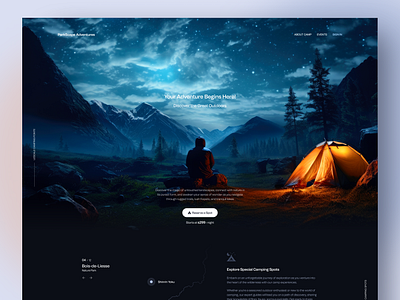How Website Design in copyright Can Improve Your Website’s User Experience
How Website Design in copyright Can Improve Your Website’s User Experience
Blog Article
Increase Interaction With Innovative Site Style Solutions
A thoughtfully crafted individual experience, underpinned by critical aesthetic design and interactive elements, can considerably enhance user involvement. By exploring various techniques such as responsive design and customized content, companies can produce a platform that not only mesmerizes users yet additionally cultivates lasting loyalty.
Recognizing User Experience
Comprehending individual experience (UX) is crucial for developing reliable site design solutions, as it directly influences just how customers engage with digital systems. A detailed UX approach includes numerous aspects, consisting of access, usability, and individual contentment, every one of which contribute to the general effectiveness of a web site.
To start with, functionality focuses on exactly how easily customers can navigate and find the details they seek. Ease of access ensures that all individuals, consisting of those with disabilities, can successfully engage with the website.
Additionally, recognizing user personas is essential for tailoring the experience to satisfy certain target market demands. By conducting customer study and screening, designers can gather insights that educate style decisions, making certain the website not just satisfies aesthetic objectives yet additionally satisfies useful needs. Ultimately, a thoughtful technique to UX style cultivates engagement, urges retention, and improves general user fulfillment, which are important for the success of any type of electronic system.
Visual Design Techniques
Including effective visual style techniques is important for capturing individual interest and improving the general individual experience on an internet site. A well-balanced visual hierarchy guides users via the material, enabling them to quickly soak up and navigate information. This can be achieved through the critical use typography, color design, and spacing, which collectively develop a cohesive and engaging design.
Shade plays an essential duty in evoking feelings and developing brand identity. Making use of a well balanced shade combination that lines up with the brand's principles can promote knowledge and count on. Furthermore, integrating high-grade pictures and graphics boosts aesthetic appeal and can considerably improve customer engagement.
Whitespace, typically neglected, is equally important as it permits web content to breathe and prevents frustrating users with mess. It promotes less complicated analysis and understanding, leading to an extra delightful surfing experience.

Interactive Components for Involvement

One trick element of interactive layout is customization. Customizing experiences based upon individual behavior and preferences can dramatically raise engagement. For example, customized content suggestions or vibrant interface that adjust to individual choices create a feeling of ownership and importance, encouraging customers to check out even more.
Gamification is an additional powerful strategy. Incorporating game-like components, such as success or incentives for completing jobs, can change mundane communications find out this here right into pleasurable experiences. This strategy not just boosts engagement yet additionally urges users to return, producing a dedicated target market.
Additionally, interactive elements can assist in social sharing, magnifying an internet site's reach. Functions like comment sections, share switches, and user-generated material locations foster area interaction, turning visitors into energetic individuals (website design copyright). Ultimately, the calculated use interactive components is essential for developing a compelling and interesting web site that reverberates with individuals
Responsive and Adaptive Layout
A properly designed internet site has to focus on flexible and receptive design to make sure optimum individual experiences across a range of gadgets and display sizes. Responsive design employs fluid grids and adaptable photos, enabling the layout to instantly readjust based on the customer's display size. This approach ensures that users can quickly browse and communicate with the content, despite whether they are making use of a tablet computer, desktop computer, or mobile phone .
On the other hand, adaptive style uses predefined designs that are tailored to specific gadget classifications. This means that the site spots the type of tool being made use of and serves the appropriate layout, which can boost packing times and maximize the screen of essential elements. While both techniques intend to boost functionality, responsive style is frequently favored for its fluidness and seamless change in between tools.
Integrating adaptive and receptive style not just boosts customer satisfaction yet likewise positively impacts internet search engine rankings. Internet search engine focus on mobile-friendly sites, hence boosting presence and drawing in even more visitors. For that reason, purchasing these style techniques is vital for services looking to engage their audience successfully and preserve an one-upmanship in today's digital landscape.
Studying User Comments and Information

Assessing metrics such as bounce prices, time on page, and click-through rates offers a quantitative point of view on customer interaction. These metrics assist developers discern which web content reverberates and which areas might need optimization. A/B testing can be used to review variations in official source style, allowing developers to make enlightened choices based on user communications.
Including individual responses not just boosts internet site usability yet additionally promotes a feeling useful link of community and trust. Involving with individuals through feedback loops grows loyalty and motivates repeat brows through. Ultimately, leveraging individual comments and data analysis is indispensable to creating a vibrant, user-centered site that adjusts to progressing individual demands and preferences, consequently driving higher involvement and satisfaction.
Verdict
To conclude, ingenious site design remedies dramatically enhance customer involvement by focusing on customer experience, employing reliable visual methods, and incorporating interactive elements. The application of responsive and flexible design makes sure availability throughout different gadgets, better cultivating customer interaction. Constant analysis of customer feedback and information helps with recurring enhancements, resulting in sustained satisfaction and commitment. Eventually, the merging of these style concepts cultivates an engaging online atmosphere, essential for driving long-term user engagement and commitment.
A thoughtfully crafted user experience, underpinned by calculated visual style and interactive components, can considerably boost individual involvement.Integrating efficient aesthetic layout methods is important for catching individual focus and improving the total user experience on an internet site.User feedback and data analysis are vital elements of efficient web site style, as they give important insights right into individual habits and choices. Eventually, leveraging customer comments and data evaluation is indispensable to developing a vibrant, user-centered website that adapts to evolving individual demands and choices, thus driving greater involvement and contentment.
In final thought, innovative site layout solutions dramatically improve individual interaction by prioritizing customer experience, using reliable aesthetic approaches, and incorporating interactive elements.
Report this page